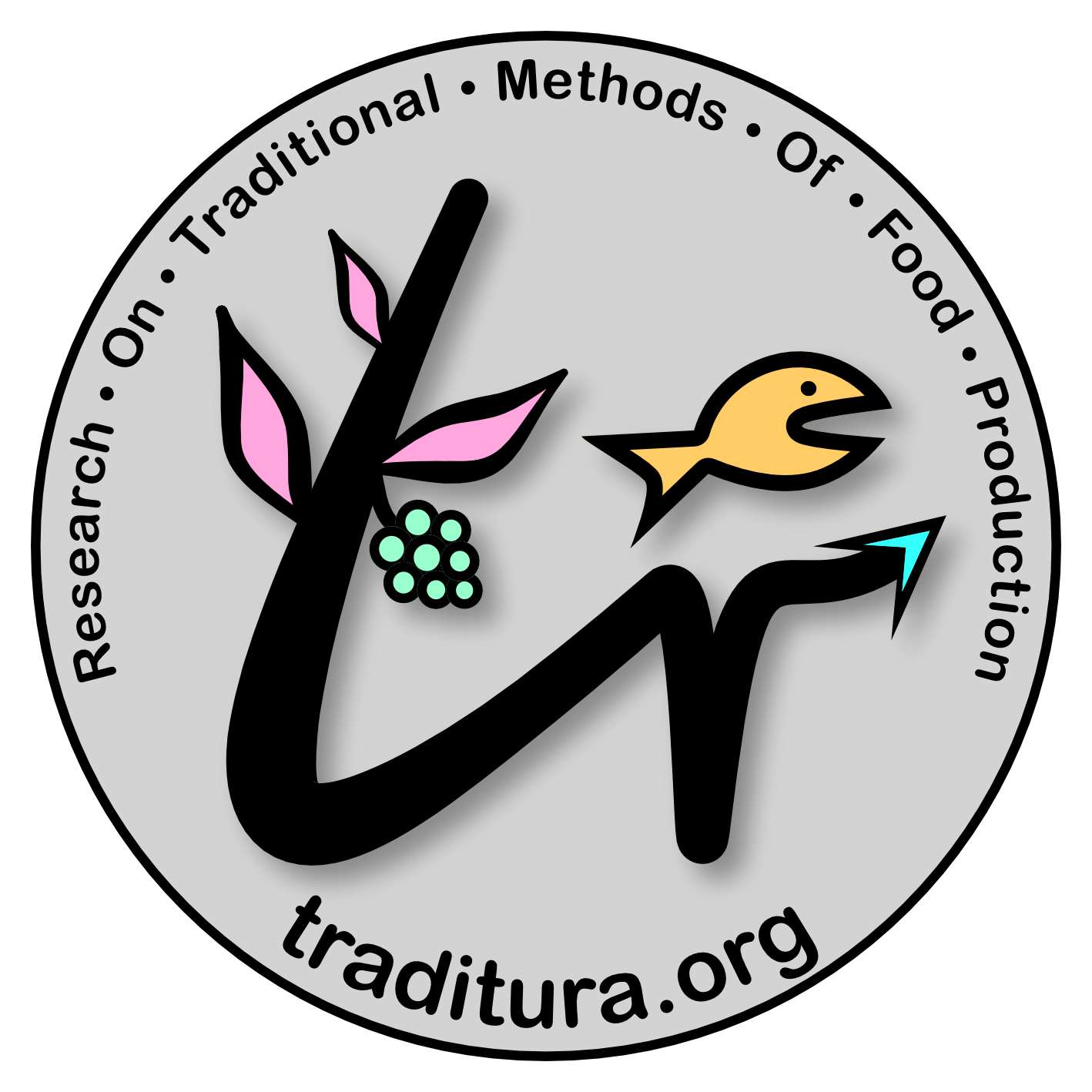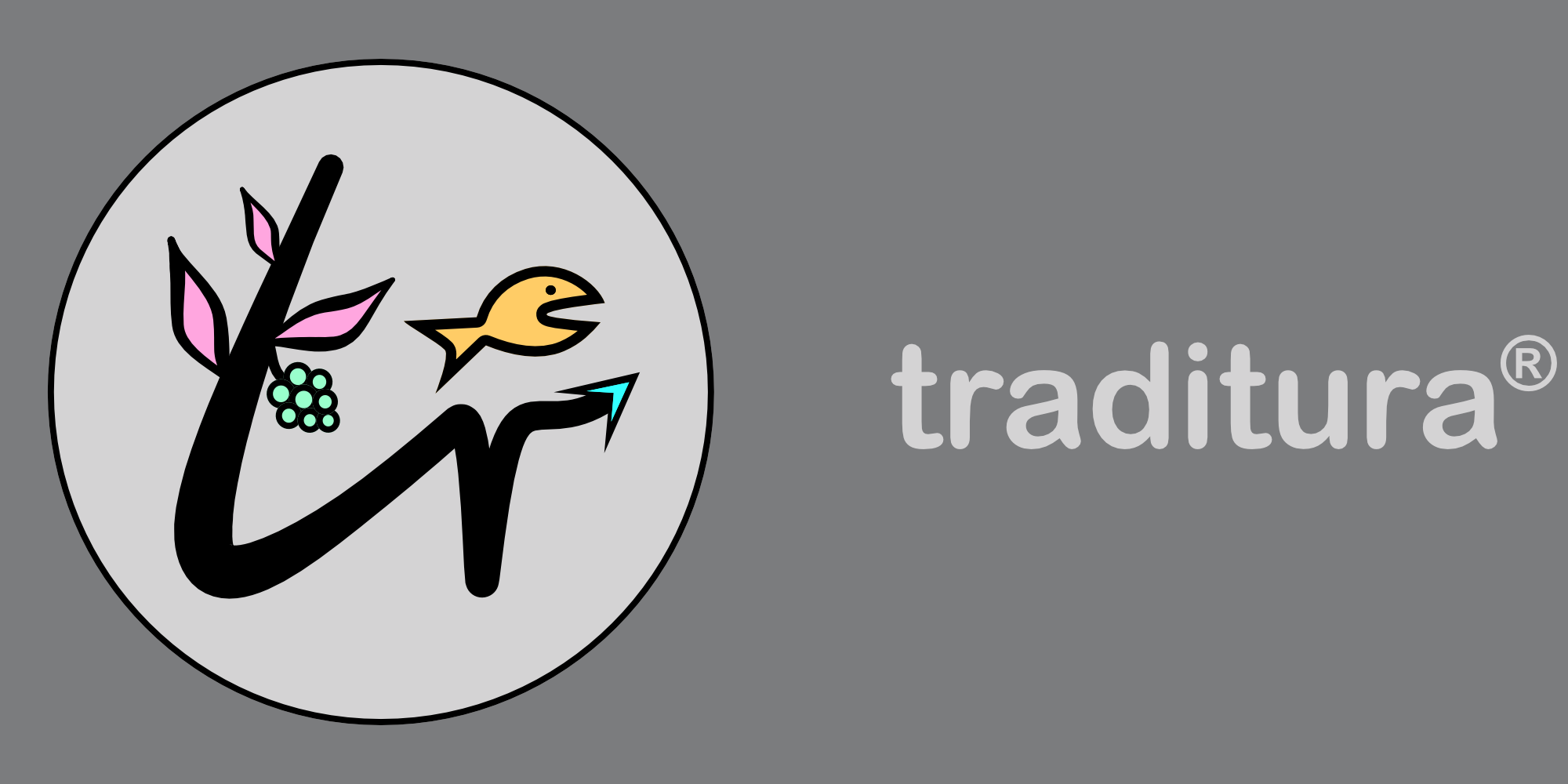From the beginnings of collecting and later catching marine animals on the coast and in inland waters, to the first fishing gear, then later with boats and spears or nets, to our present-day deep-sea fishing fleets and aquacultures, an arc spans several hundred thousand years. Fish have been an integral part of the diet of modern humans since the very beginning – and probably before.
But before we turn to the food group fish and seafood, we would like to draw your attention to the topic of animal welfare in fish farming with the following short film. This topic is becoming more and more relevant for consumers with the increasing mass production of animal-based foods, and not only due to political requirements. Animal welfare and good growth often go hand in hand in animal breeding.
The cartoon is an excerpt from our training video on aquaponics, in which fish and plants are grown together in a water and nutrient cycle system. The two examples illustrate the differences between fish and mammals in terms of their spatial and mimic needs – a serious background that we have tried to present with a touch of humour.
But let's get back to the actual topic of this post and start by breaking down the fish and seafood food group.
Food fish are often divided into freshwater and saltwater fish either according to their habitat or spawning ground:
- Freshwater fish such as salmonids, carp, catfish and perch,
- Saltwater fish, also known as seafish, such as herring, cod, tuna, plaice, flounder, hake.
Another classification is based on fat content:
- Lean fish (up to 2% fat), such as pike, pikeperch and cod,
- Fish with a medium fat content (2-10% fat), such as carp, trout and sea bream,
- Fatty fish (over 10% fat), such as salmon, herring, eel and mackerel.
Fish can also be categorised according to their body shape:
- Round fish such as trout, perch, mackerel, herring and pike,
- Flatfish (true bony fish) such as plaice, flounder, turbot and sole,
- Snake fish such as eel, moray eel, lamprey.1a)
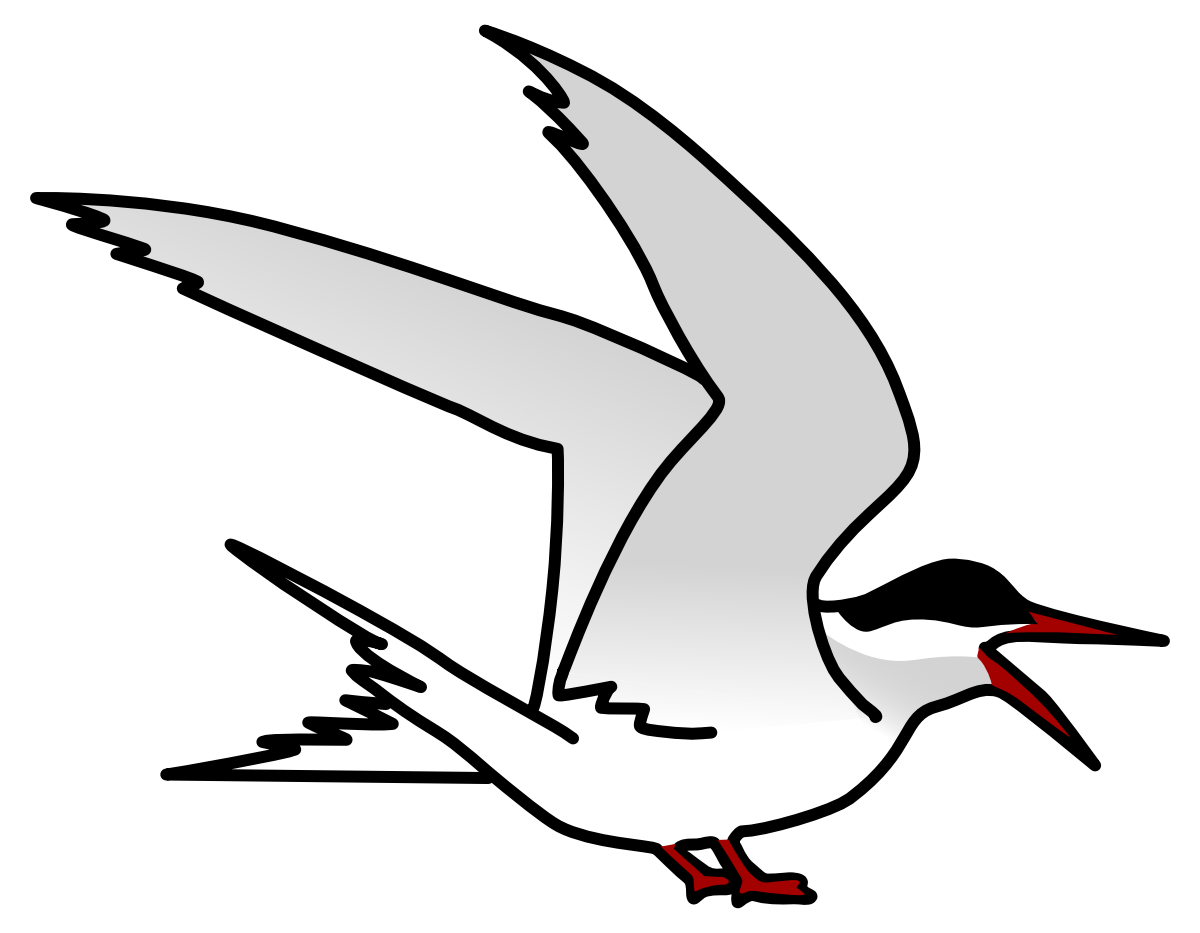
By the way:
Male fish are called milter, female fish are called roger. And my name is Fritz!
Seafood is roughly categorised into:
- Soft or shellfish such as squid, mussels, oysters and snails, as well as
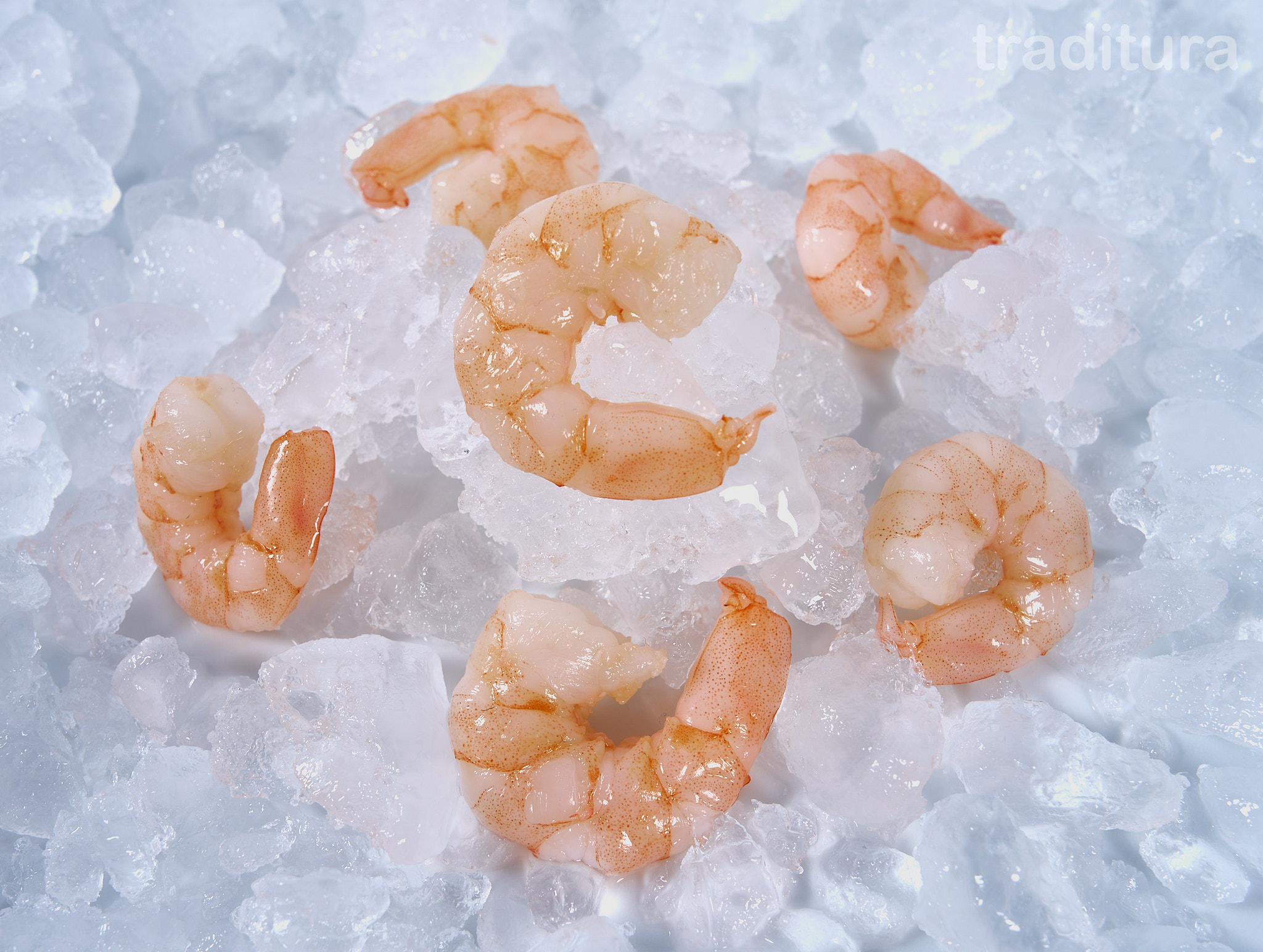 Prawns, boiled and peeled
Prawns, boiled and peeled - Crustaceans such as shrimps, crabs, lobsters, crayfish and langoustines.1a)
In Germany, the term seafood generally refers only to edible animals from the sea that are not vertebrates. In English, however, the corresponding term seafood is somewhat broader. It includes all edible animals and plants from the sea, including fish, marine mammals and algae.2)
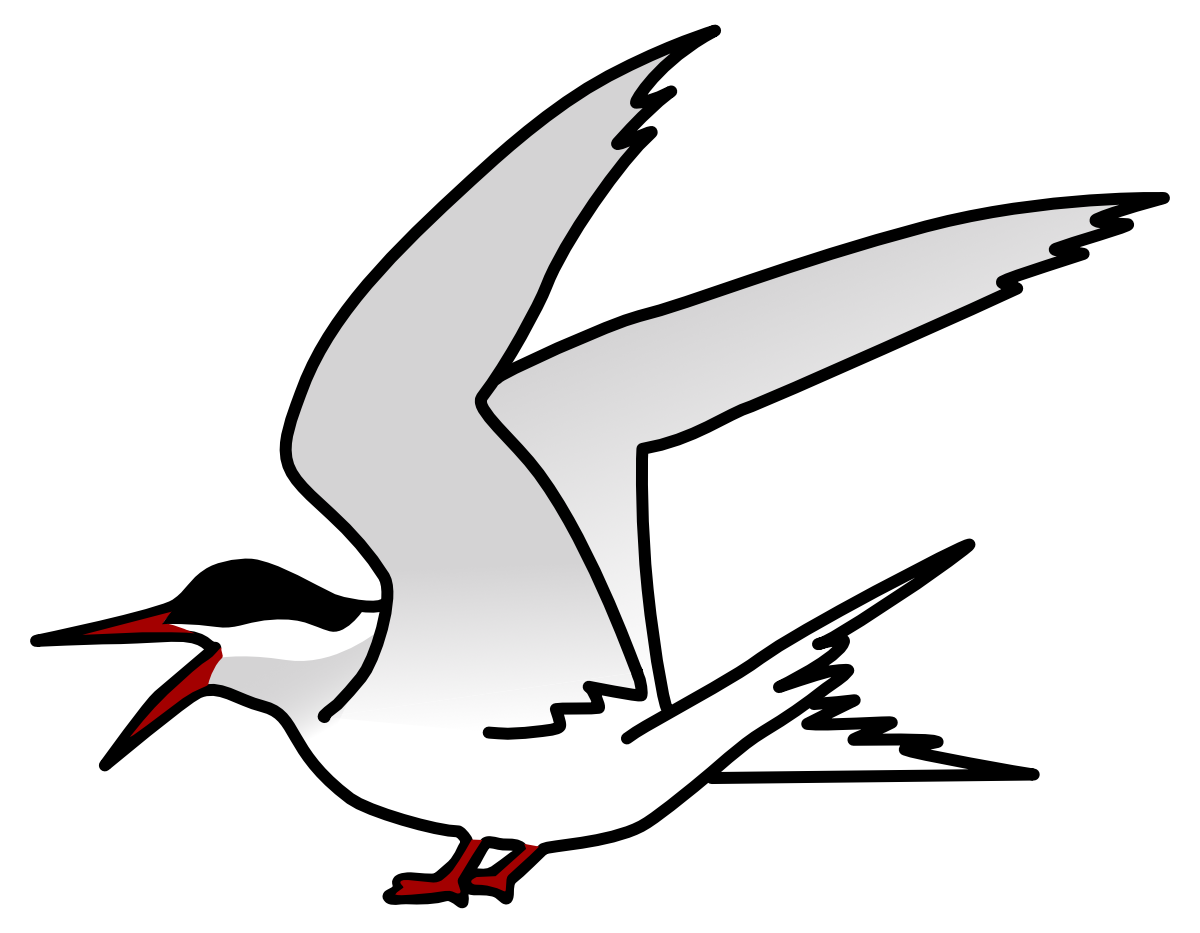
I'm on a seafood diet. When I see food, I eat it!
According to the German Nutrition Society (DGE), fish should be on the menu one to two days a week. River, lake or sea dwellers are considered healthy foods because they are rich in essential amino acids (the building blocks of proteins that our body cannot synthesise itself), vitamins, minerals, trace elements and long-chain fatty acids. Of particular importance here are the polyunsaturated omega-3, omega-6 and omega-9 fatty acids, which the human body cannot produce itself or can only produce in insufficient quantities (= essential fatty acids). These must therefore be taken in with food in sufficient quantities and are found in significant proportions in fatty fish such as salmon and herring.1b) Because of their essential amino acids, fish are also considered a good source of biologically high-quality and easily digestible protein from a nutritional physiology perspective.1c)
Fish and seafood are highly perishable foods. They are therefore not only sold fresh, but also frozen, dried, salted, marinated, canned or smoked. The EU average is around 24.4 kg of fish and seafood per person per year, with Portugal leading the way at around 57 kg per person.7) By contrast, the current per capita consumption in Germany is well below the EU average at around 14 kg per year.3) Seafood accounts for around 11% of this.4)
However, the domestic production of German sea and inland fisheries and aquaculture only covers about one-sixth of the demand. The supply is mainly ensured by imports.3) For labelling in the trade, in addition to the commercial designation of the species, including the scientific name, the production method (sea or inland fishing or aquaculture), the fishing gear category (e.g. trawl, hook, weir, trap) and the fishing area must be indicated. The Food and Agriculture Organization (FAO) of the United Nations has divided the world's oceans into 19 fishing areas. In addition, a defrosting notice is mandatory if the frozen products have been thawed before sale and are thus offered as fresh products in the service counter.5)
Thanks to rapid transport and direct processing - often on the ship itself - many products now reach the consumer in excellent condition. The term ‘fresh fish’ generally does not refer to the time elapsed since the catch, but rather expresses the fact that the fish remains untreated after being caught or is merely gutted and properly cooled in melting ice between 0 and 2° Celsius, without the fish tissue freezing.6)
ho
Our next article will focus on insects as food. But first, we would like to introduce our new colleague Fritz:
References:
1) Rimbach, G., Nagursky, J., Erbersdobler H. F., 2015: Lebensmittel-Warenkunde für Einsteiger, 2. edition, a) page 99 ff., b) page 117, c) page 119, Springer-Verlag, Berlin Heidelberg, ISBN: 978-3-662-46280-5
2) Cf. Wikipedia, 2025: Meeresfrüchte, taken from the internet on 09.03.2025, https://de.wikipedia.org/wiki/Meeresfr%C3%BCchte
3) Cf. Bundeszentrum für Ernährung, 2023: Vom Acker bis zum Teller, Fisch: Fang und Zucht, taken from the internet on 08.03.2025, https://www.bzfe.de/lebensmittel/vom-acker-bis-zum-teller/fisch/fisch-fang-und-zucht/
4) Cf. Bundeszentrum für Ernährung, 2023: Vom Acker bis zum Teller, Fisch: Einkauf, taken from the internet on 08.03.2025, https://www.bzfe.de/lebensmittel/vom-acker-bis-zum-teller/fisch/fisch-einkauf/
5) Cf. Bundeszentrum für Ernährung, 2023: Vom Acker bis zum Teller, Fisch: Kennzeichnung, taken from the internet on 08.03.2025, https://www.bzfe.de/lebensmittel/vom-acker-bis-zum-teller/fisch/fisch-kennzeichnung/
6) Cf. Bundeszentrum für Ernährung, 2023: Vom Acker bis zum Teller, Fisch: Verarbeitung, taken from the internet on 08.03.2025, https://www.bzfe.de/lebensmittel/vom-acker-bis-zum-teller/fisch/fisch-verarbeitung/
7) Europäischer Rat, Rat der Europäischen Union, 2025: Bewirtschaftung der Fischbestände der EU, taken from the internet on 09.03.2025, https://www.consilium.europa.eu/de/policies/eu-fish-stocks/
